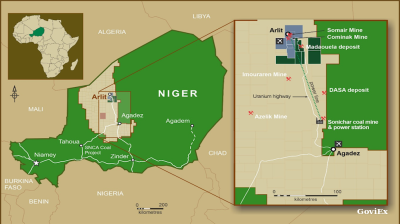Southern Africa has “enormous” potential for the production of green hydrogen, an emerging energy source that can contribute to the global transition from fossil fuels to renewables, a new study by the H2Atlas-Africa project finds.
The Southern African Science Service Centre for Climate Change and Adaptive Land Management (SASSCAL) said on June 5 that the H2Atlas-Africa project supports climate adaptation and mitigation programmes by providing data that can be used for green energy production, Mining Weekly reports.
SASSCAL is a joint initiative of Angola, Botswana, Namibia, South Africa, Zambia and Germany, which has collaborated with the Southern African Development Community Centre for Renewable Energy and Energy Efficiency (SACREEE) as a technical implementing partner.
The results of the H2Atlas-Africa project, sponsored by the German government, are presented in the form of an interactive atlas, which shows “locations of interest” in Southern African countries.
The interactive atlas is seen as the first science-based decision support tool for the development of green hydrogen pilot plants, with contributions from 60 scientists, 16 modellers and a 12-member regional technical committee team.
It “provides information on different resources for green hydrogen production. These include ground and surface water resources, land availability, solar and wind renewable energy resources, as well as levelised cost of hydrogen production and other key indicators such as social circumstances policy framework, and export, transport and energy regulations,” Mining Weekly writes.
South Africa estimates that it has the potential to produce 6mn to 13mn tonnes of green hydrogen and derivatives a year by 2050. It needs between 140GW and 300GW in renewable energy for it to be able to produce the fuel.
On May 26, Namibia’s government and Hyphen Hydrogen Energy, whose shareholders include German firm Enertrag, signed a feasibility and implementation agreement for a $10bn green hydrogen project.
National launches of the H2Atlas-Africa are planned in the second half of 2023 on what are regarded as key elements about the potential of regional green hydrogen development for policy makers, investors, researchers and potential funders.
“The atlas which can contribute to the development of national and regional roadmaps and strategies for enabling green hydrogen-based economies in sub-Saharan Africa, is seen as having great relevance for Germany, Africa and the world, with the project results providing information that enterprises can leverage for sustainable development,” writes Mining Weekly.
News

China launches Hongqi H5 sedan in Middle Eastern markets
Luxury Chinese off-brand Rolls-Royce launches in the Iranian auto market at $42,000 massively undercutting European and Japanese sedans in the same market.

Arab-Islamic Summit to target Israel after strikes on Doha
Arab-Islamic leaders convene emergency Doha summit to address Israeli attack on Qatar with condemnation expected but limited concrete action anticipated.

Nepal appoints Sushila Karki, its first woman prime minister amid political unrest
Nepal has appointed former Supreme Court Chief Justice Sushila Karki as its interim prime minister, marking the first time in the country’s history that a woman has led the government.

“They are bankrupting hope in this country” – Imamoglu issues warning ahead of fateful day for Turkish democracy
“I’m so free in my 12-square-metre cell that it would make those in their palaces burst with envy,” he says ahead of big protest in Ankara.




